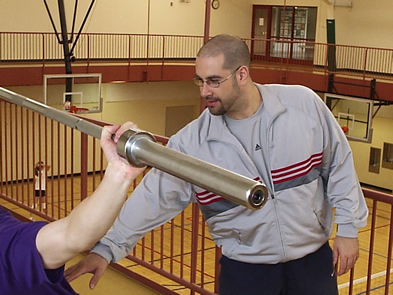Youth Fitness Business Systems
By Pat Rigsby
To run a youth fitness business that functions at a very high level you need the following Business Operating System components in place:
An Overall Business Growth Plan – Most fitness businesses approach growth very arbitrarily. They randomly try to do things and don’t really have a plan. It’s very much like the difference between designing a program based on a client’s assessment and goals versus just giving them random workouts.
It might work out ok – but the odds of it doing as well as the planned approach aren’t very good.
This plan should include:
Knowing who you want to serve
How you intend to reach those people and get them to become clients
A Marketing Calendar to put this into action
Specific Business Targets – You need to have targets for the number of leads that you need each month, the closing percentage for those leads actually becoming clients, specific revenue targets and specific profit targets at minimum. There are any number of other target metrics that you can (and should) track, but those are the basics.
Trackable Lead Generation System – For you to grow a successful and sustainable business you need to have several lead generation strategies that you can consistently execute and track for effectiveness. You need to be able to know that:
You’re getting enough quality leads per month.
Where those leads are coming from.
The cost of getting those leads, both from a money perspective and a time perspective
This way you can focus on what’s working and improve or replace what is not.
Trackable Lead Conversion System – You must know how effective you are at turning prospects into clients. You should know which prospects are higher quality (convert better and stay longer) and which aren’t.
Client Value Maximization System – You can call this what you want, but you must have a systematic way to:
Retain clients
Maximize their value to your business
Provide them the most complete solution for their goals possible
Most fitness professionals do not have this System in place and leave up to half of their potential revenue on the table.
Business Operations Systems – The systems for what go on ‘behind the scenes’ in your business, from how you answer the phone or respond to emails to how you clean your facility. A business might get away without these when it’s a one person operation, but they’re critical if you have a staff or want to.
Finance Systems – You must have systems to address:
Automated billing
Bookkeeping
Accounting
Taxes & Payroll (if you have staff)
Financial systems routinely either get overlooked by fitness business owners or are handled in a way that eventually costs the business a lot of revenue. Remember, it’s not what you make, it’s what you keep.
Hiring & Staff Training Systems – Almost every business owner aspires to have staff, whether it’s adding more trainers or coaches or it’s hiring someone to handle some of the administrative tasks that go into running the business.
If your going to have staff, then you need to have systems in place to hire the right people and develop them to do the job that you need done at the highest level possible.
Hopefully this gives you some more clear insight into the components of the Business Operating System you need to have in place to run your business at the highest possible level.
Obviously, there is far more to it than what I can address in an email, but these components should be present in your Youth Fitness Business. If not, you should immediately start working to build each of these systems.
They’re that important.
If you’d like to discuss how we can help you with your Business Operating System and in providing you all of those components, click on the link below and let me know. That’s exactly what Athletic Revolution was built to do:
Help great coaches build great businesses.
You can learn more about Athletic Revolution here:
Youth Fitness Business http://www.myathleticrevolution.com/more/
Also – with Athletic Revolution you can maintain your own brand while leveraging the best business systems in the industry. A true WIN/ WIN.


